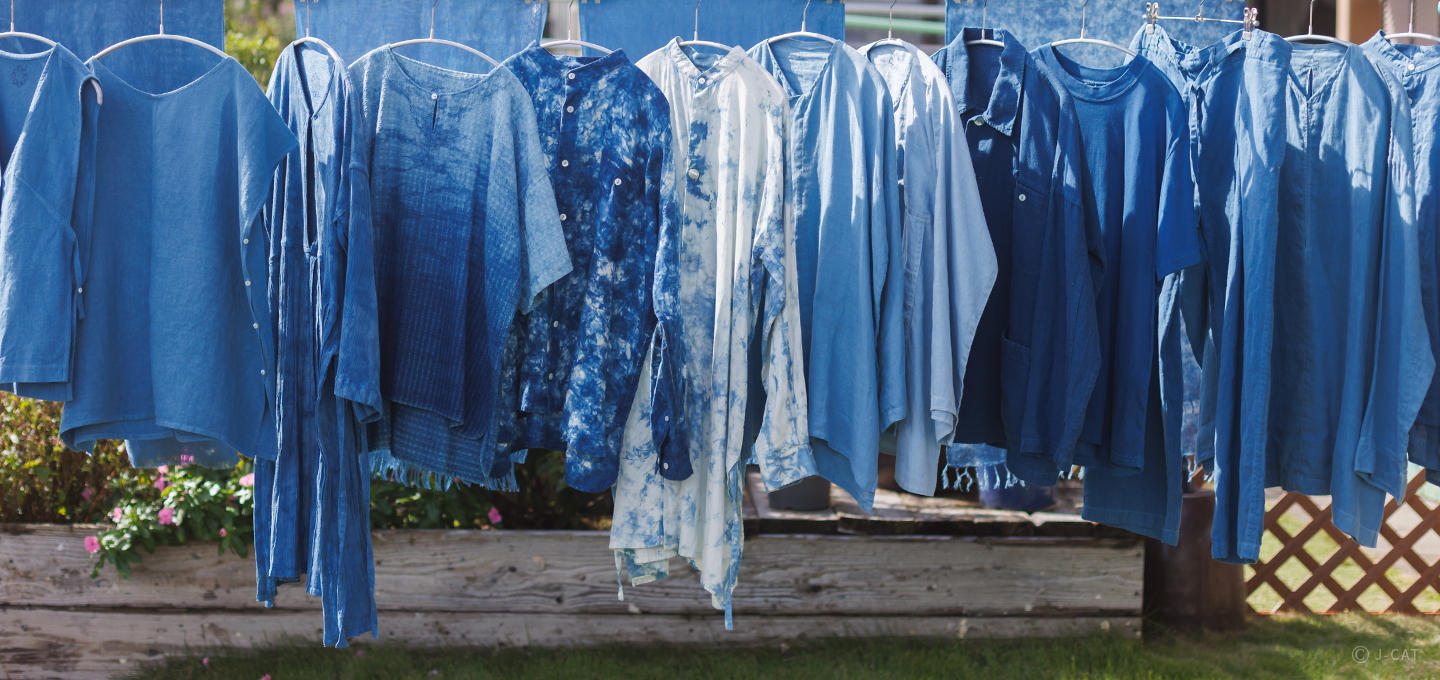
Special Experience
Gifu
Traditional “Japan Blue” Fermented Indigo Dyeing Experience in a Lush Gifu Town
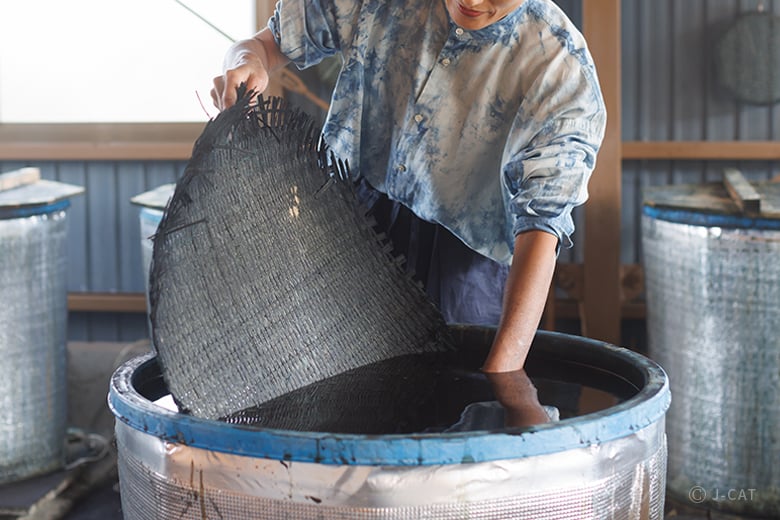
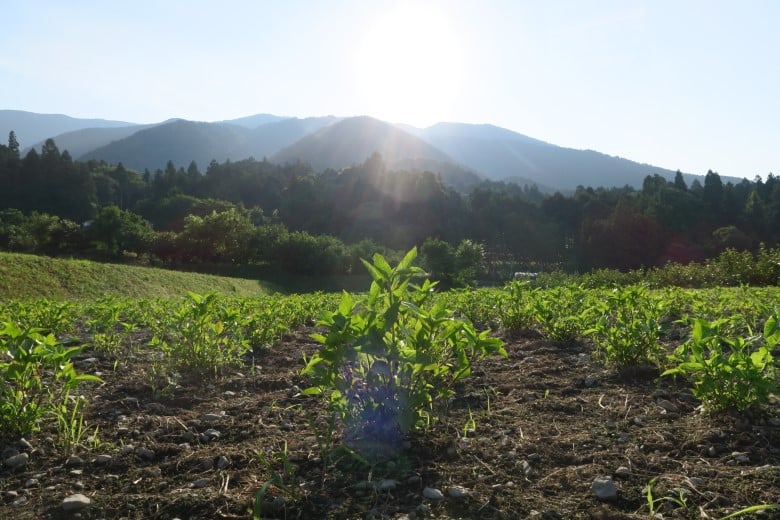
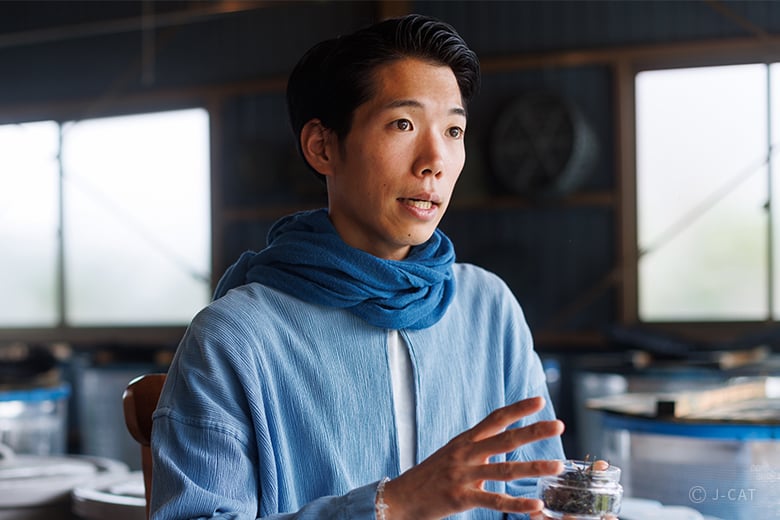
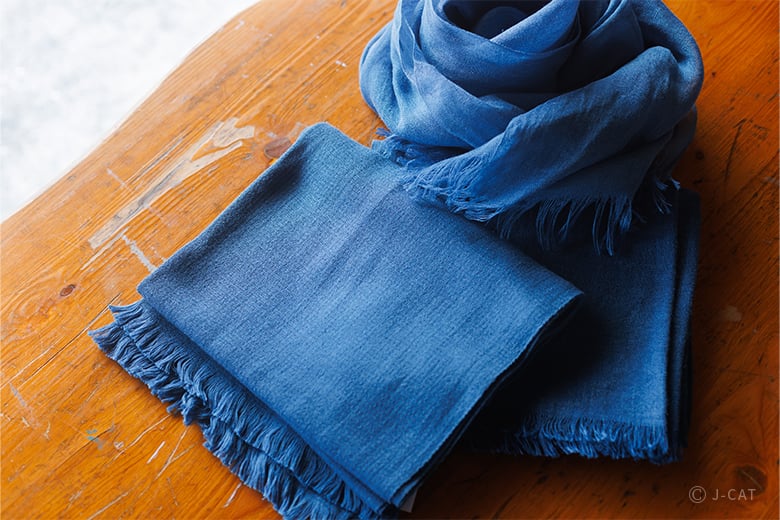
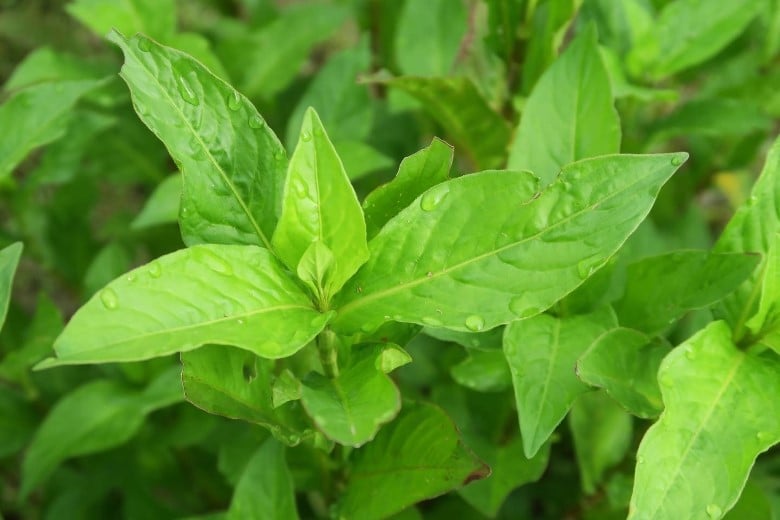
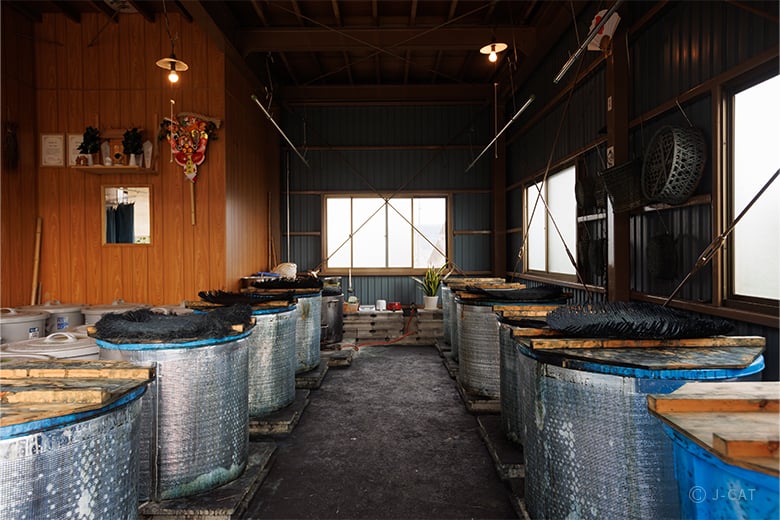
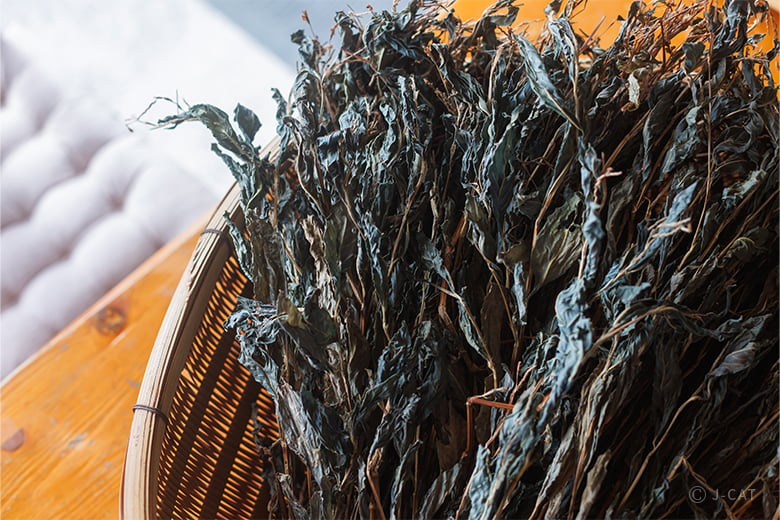
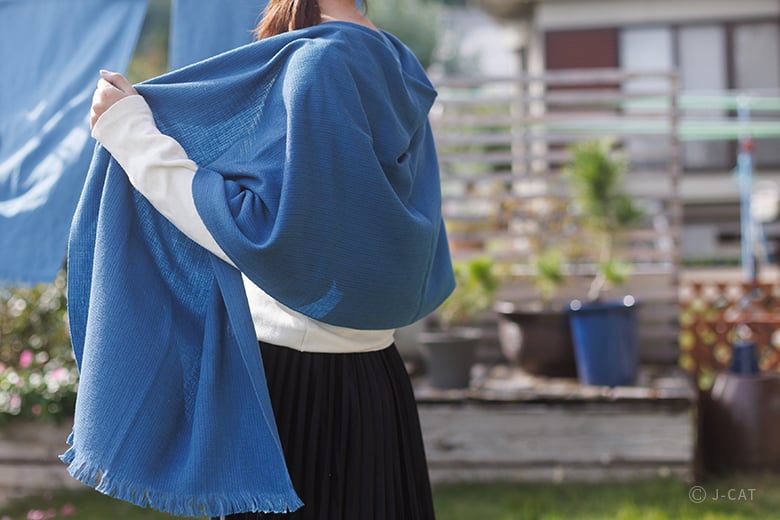
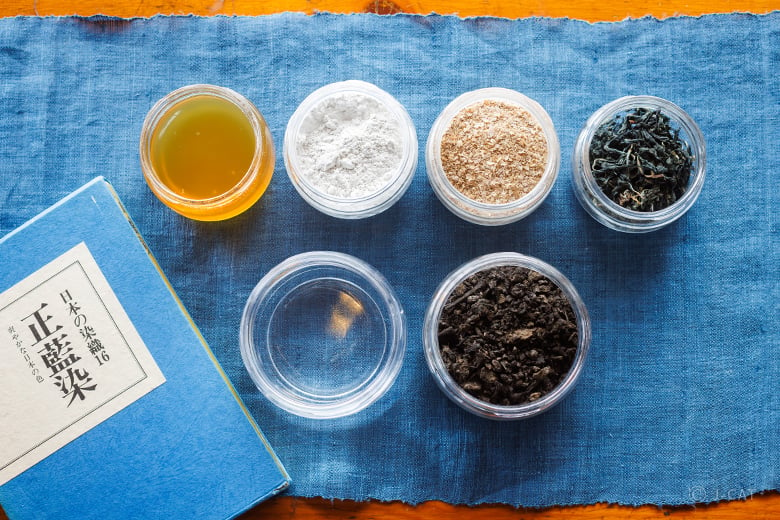
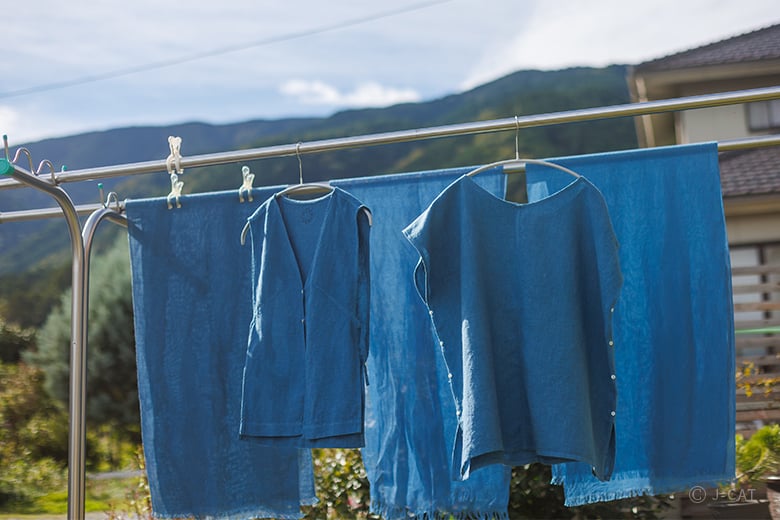
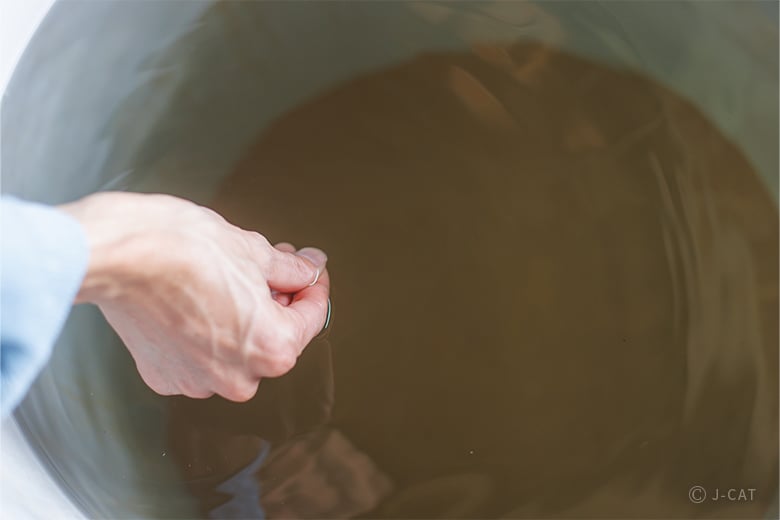
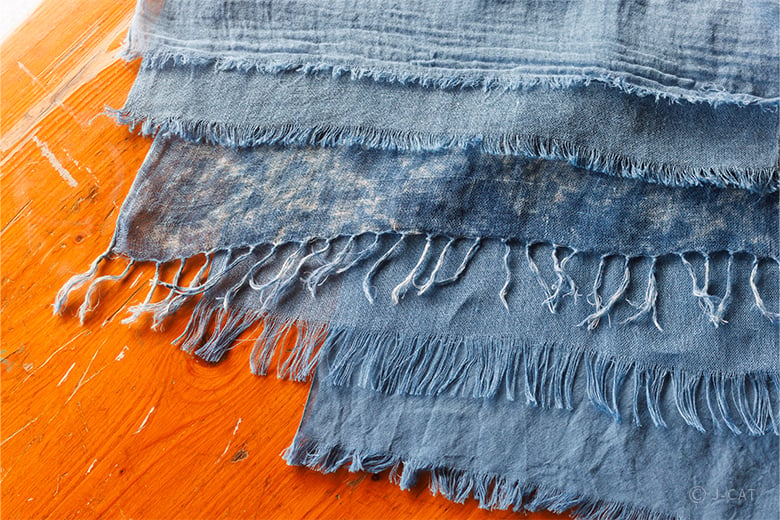
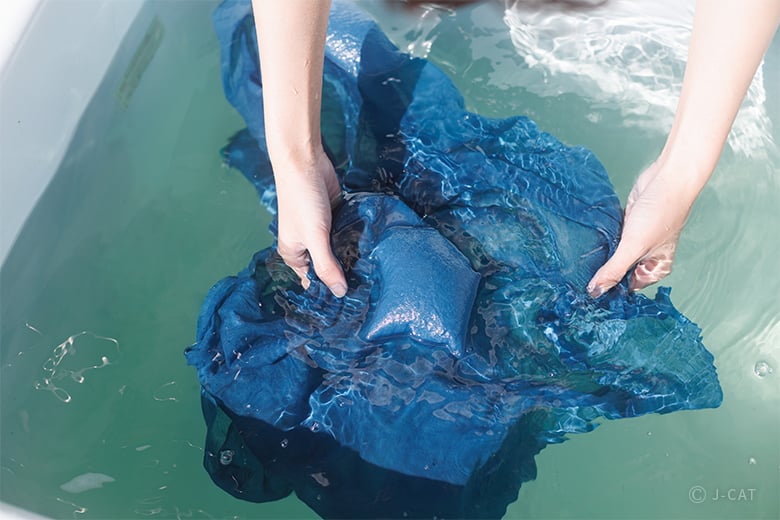
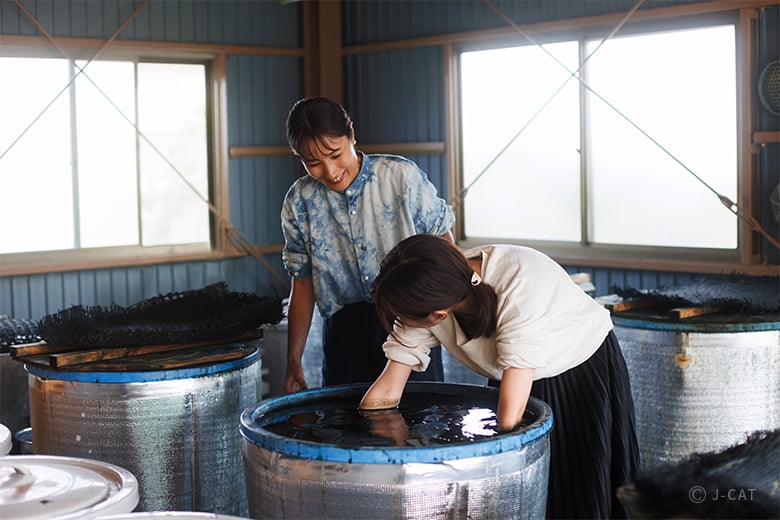
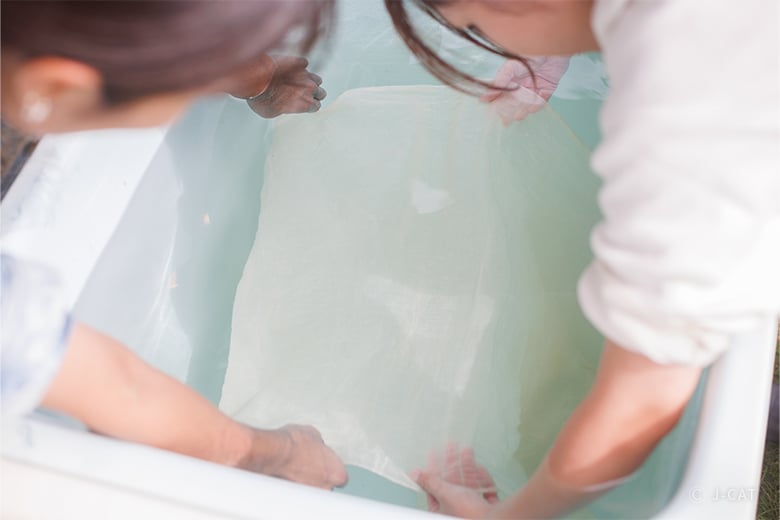
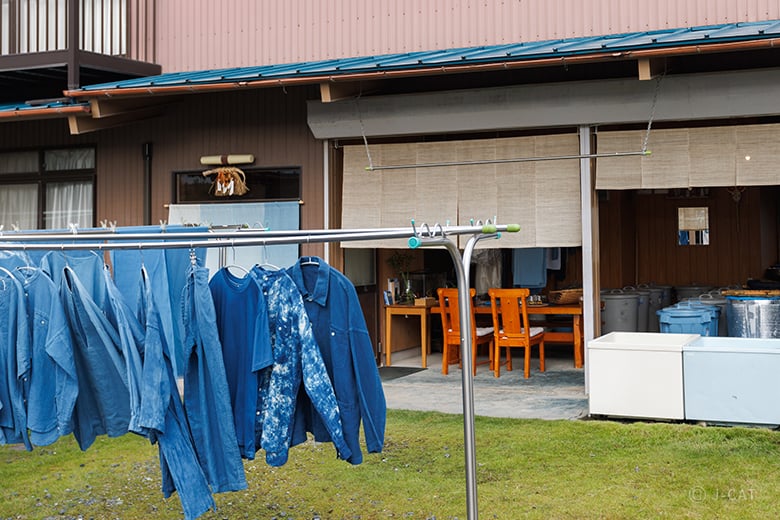
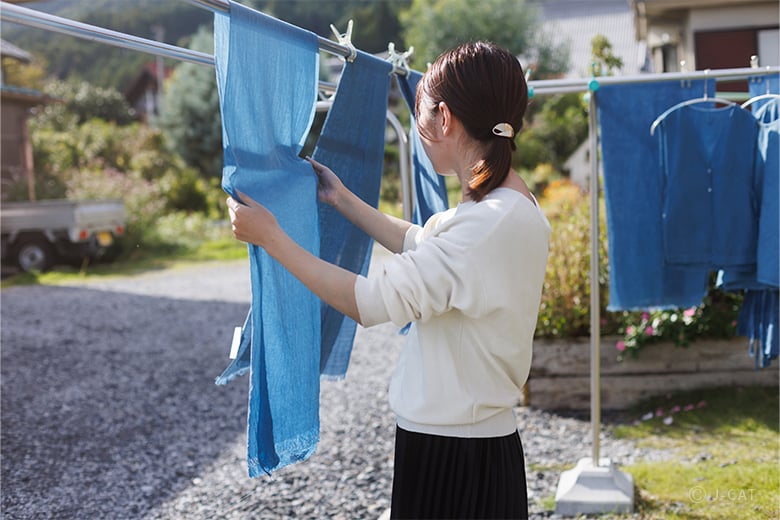
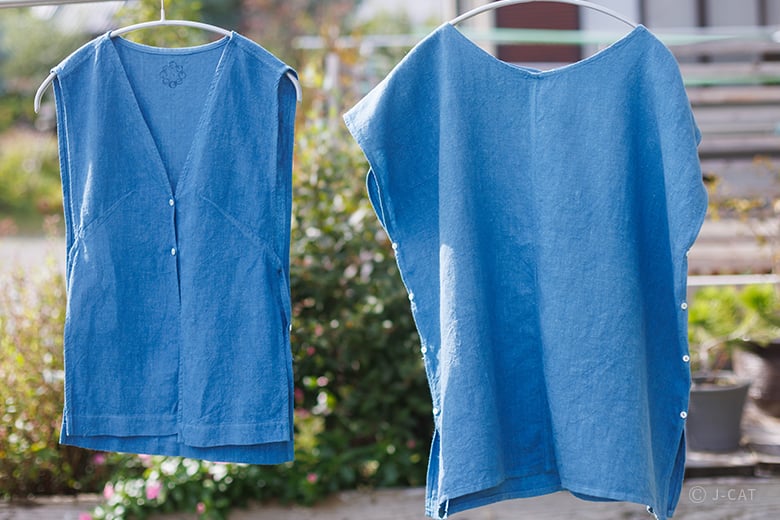
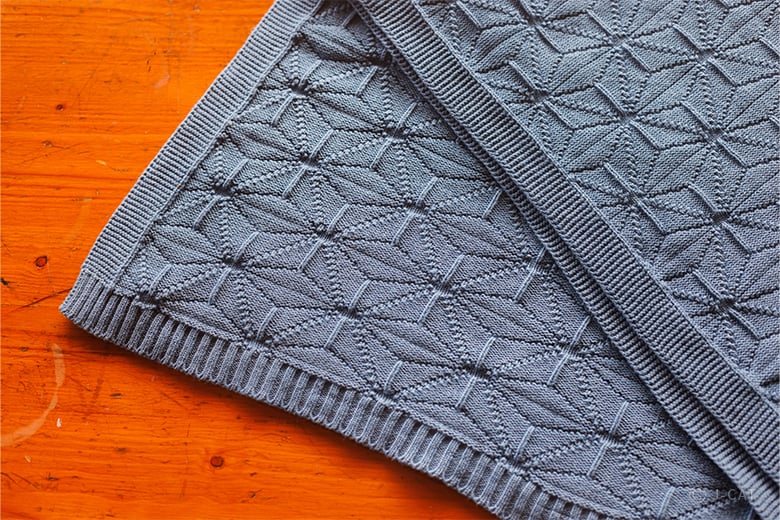
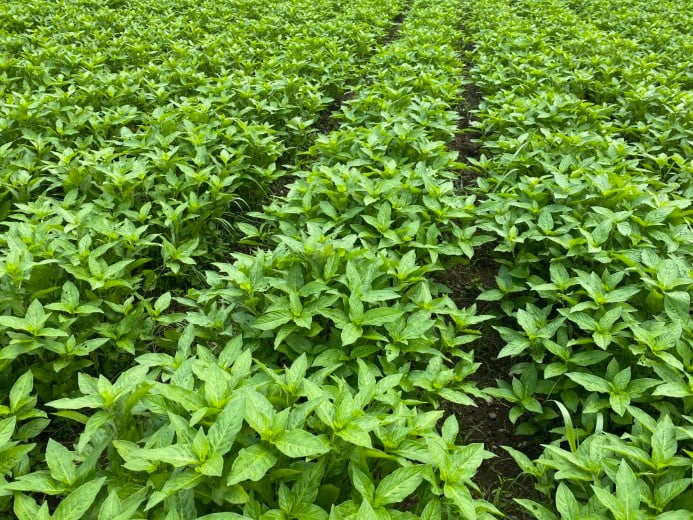
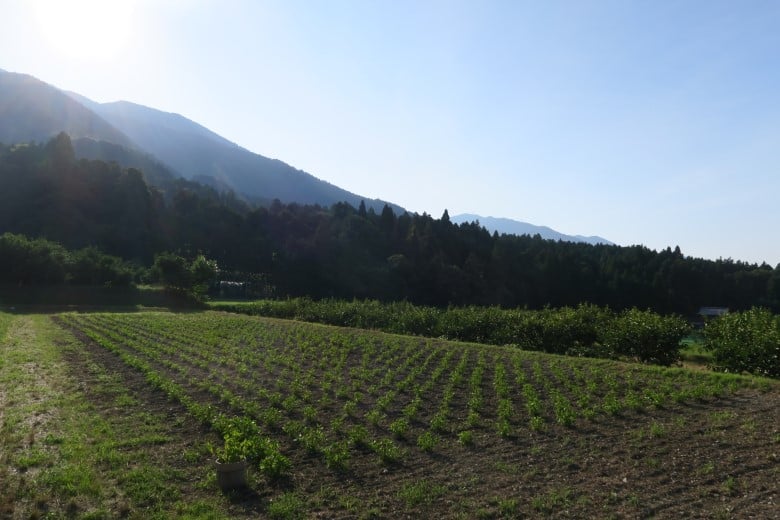





















Overview
Run by husband-and-wife duo of Kazuya and Miki Nohara in Gifu Prefecture’s verdant town of Ikeda, an hour outside of Nagoya, Aiwayu is a fashion brand using genuine traditional “Japan Blue” fermented indigo dyeing techniques. Participants in this experience can tour their workshop and experience hondate sho aizome, in which a live culture of microorganisms is used in solution with indigo leaf to dye. Learn not only the techniques but also the cultural history and philosophy of this ancient art.
Key Features
・Traditional hondate sho aizome dyeing experience in a workshop set in the idyllic foothills of Gifu Prefecture
・From spring 2025 onward, guests can also tour the indigo fields to see how the raw material is grown (March to November only)
・Choose to dye a Wabunka-exclusive large shawl, or opt to dye an original vest, top, or blanket as an add-on (additional fees apply)
Gifu
180mins
from ¥43,000 /person
1 - 4 participants
Available in English
Cancel free up to 4 days prior
Details
Boutique Fashion Brand Aiwayu
At its workshop nestled in the foothills of western Gifu’s Mount Ikeda, Aiwayu is a fashion brand that uses genuine live culture indigo fermentation dyeing (hondate sho aizome) to create its apparel. It is run by the Noharas, a husband-and-wife team: designer and indigo keeper Kazuya, and dyer Miki.
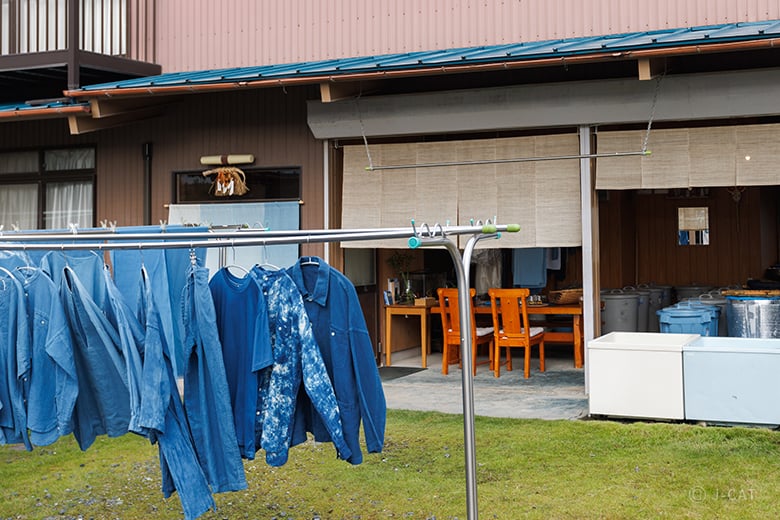
The secluded workshop space where the Noharas, dye, wash, and dry their cloth
Born in Aichi Prefecture, Kazuya moved to the UK at the age of 19 to enroll in the BA Fashion Design Course at prolific Central Saint Martins in the University of the Arts London. After graduating, he entered the Parsons New School of Design to pursue an MFA in Fashion Design and Society under a special scholarship, but was forced by the coronavirus pandemic to withdraw in his first term. Kazuya says he also felt doubts and discomfort about the modern fashion industry and the work of designers within it.
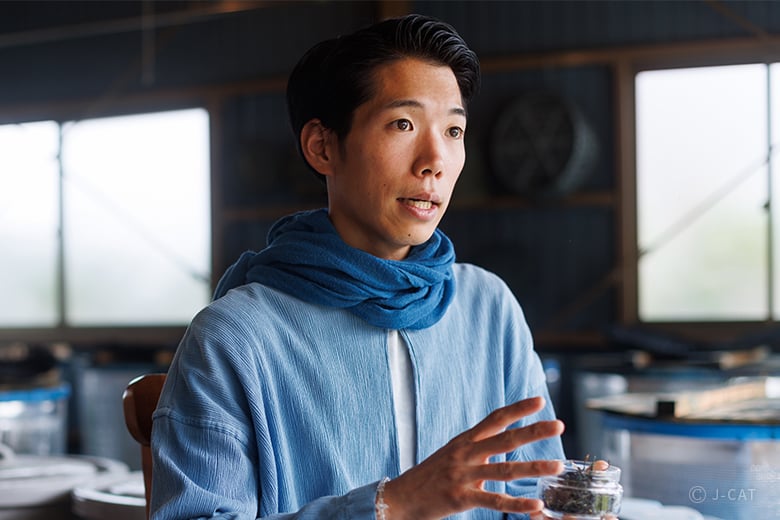
UK-schooled Kazuya gives talks in English
Around that time, Kazuya came across the work of Japanese dyer Koichi Okawa, and through it learned of the techniques and philosophy of hondate sho aizome. Kazuya wanted to pursue what he called “essential clothing production,” and was drawn to the ancient traditional techniques harnessing the power of fermentation, and the philosophy of communicating with the living dye with sincerity and gratitude.
Embarking on the path of a traditional indigo dyer in Japan, Kazuya soon met Miki – herself already a dyer who worked with kakishibu, a traditional method of dyeing using persimmon tannins – and their connection and mutual inspiration gave rise to Aiwayu.
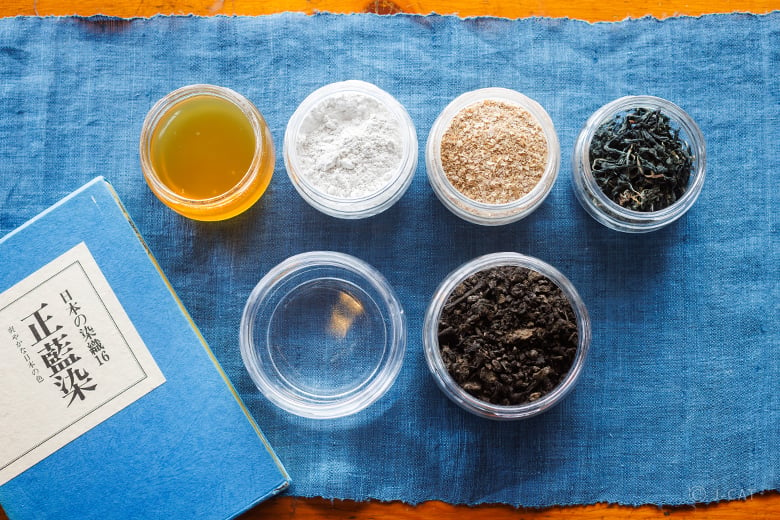
Base materials sukumo fermented indigo pulp (lower right) and lye (lower left), along with maltose, shellfish ash and wheat bran (top row) which are used to create an optimal microbial habitat
Hondate sho aizome relies on just two base materials – sukumo, a pulp made by fermenting the tade-ai indigo plant, and lye produced from wood ash. This simplicity of ingredients leaves little room for error, and it is crucial to carefully mix and manage the solution while paying close attention to the temperature, the fermentation process, and any changes in its condition along the way. The process of creating indigo dye solution is called aidate, while that of using only these two ingredients is called hondate. The act of using the resulting solution to dye cloth is called sho aizome.
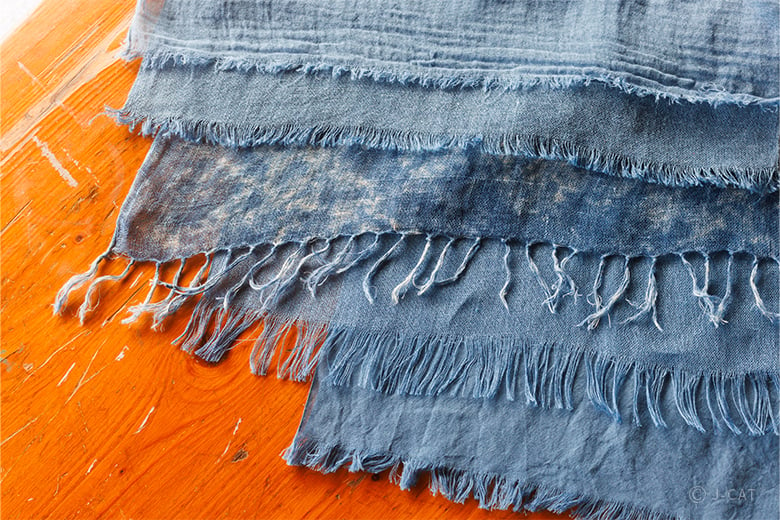
The intensity of the hue depends on the health condition of microorganism, age, and usage history of the solution
The indigo plant’s pigment is not normally water soluble, but can be dissolved into the solution thanks to the work of the microorganisms. Once this pigment has been adhered to the surface of the fabric and exposed to air, however, it rapidly oxidizes and becomes insoluble again – which is why cloth dyed with this method does not bleed color when wet. Moreover, a coating over the entire surface of the fabric gives it longevity against wear and fading.
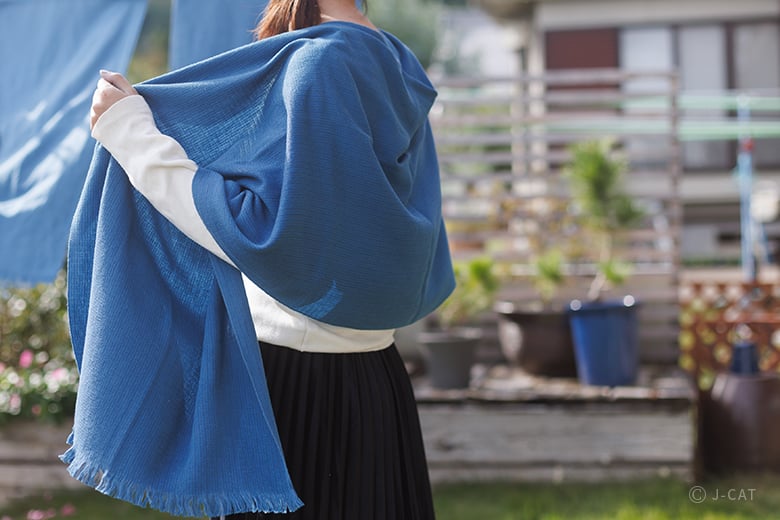
Fabrics of natural fibers dyed with natural dyes are addictive to feel on the skin
Tour the Fields where the Raw Indigo Grows
Aiwayu also grows its own indigo to produce sukumo pulp, and guests visiting from the spring of 2025 onward can tour the fields where this is done (seasonal limitations apply – please enquire for details). Grown without pesticides, the indigo plant can even be eaten, and has been used in Chinese herbal medicine since ancient times.
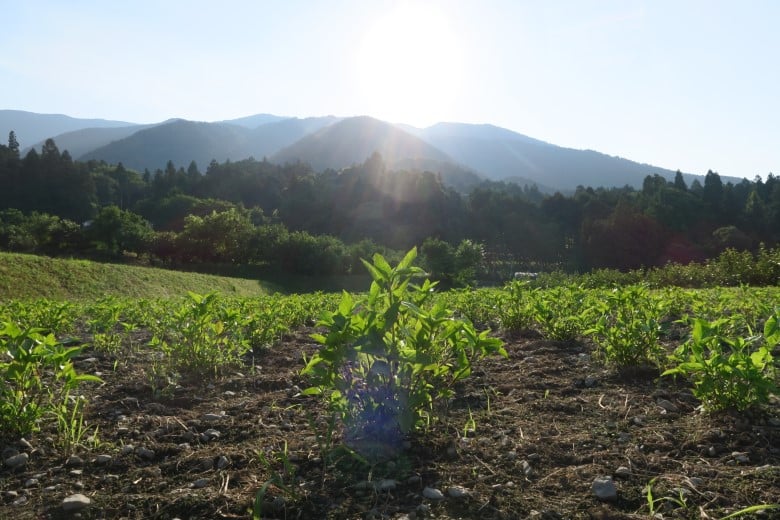
The sprawling, rustic landscape where the green leaves grow – nurturing the indigo pigment within
Harvested indigo is dried in the sun, then heaped up in an earthen-floored warehouse and soaked. After a week in this condition, the internal temperature of the heap rises to about 70 degrees as the fermentation begins. After this, the pile is turned and mixed once a week for approximately 100 days, creating the condensed and dried sukumo pulp of indigo pigment containing live culture.
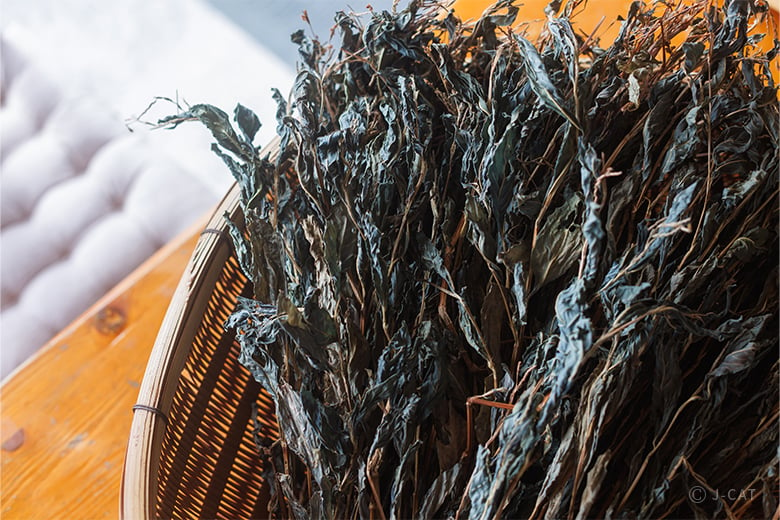
Dried indigo leaves yield a slightly bluer color than fresh leaves
Mineral-rich lye is then added little by little and kneaded in to wake and activate the microbes. Kazuya climbs into the container and spends hours stomping the mixture like a winemaker in a maceration vat until it reaches the right consistency, adding a little more lye each day while observing the conditions. When the container is full, final adjustments are made. In roughly one to three weeks, the solution is ready for dyeing.
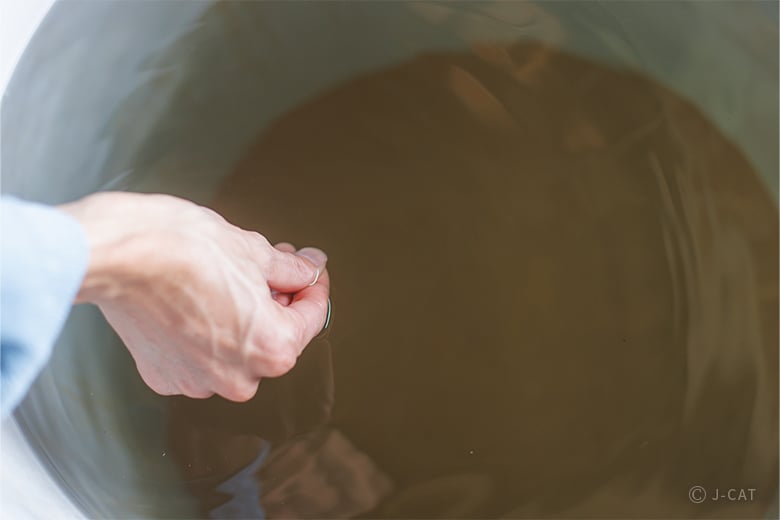
Lye has a slimy texture, and is loaded with minerals
An Experience of Genuine Hondate Sho Aizome
The Aiwayu shawls guests can choose to dye in this plan are carefully selected, durable, and made in Japan from a variety of natural fibers like organic cotton and linen. Since the surface of the dye liquid is opaque black, it is impossible to see your hands or the fabric during submersion, so begin by simulating the dye process in clear water in order to practice the techniques of smoothing out wrinkles and turning the fabric.
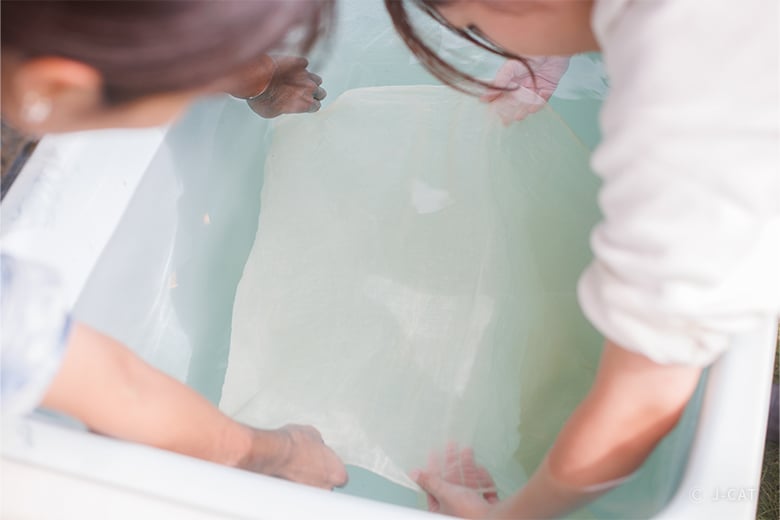
Miki, the dyer of Aiwayu, offers instruction in how to handle the cloth
After practice, it’s time for the real thing. Take your place in front of the dye vat and take a deep breath. With a word of grateful acknowledgement to the microorganisms whose habitat you are about to disturb, slowly and gently lower the cloth into the dye solution until your arms are submerged to the elbows. After that, repeat the movements you just practiced in the water, relying only on your sense of touch as you gently and carefully squeeze out air from the cloth.
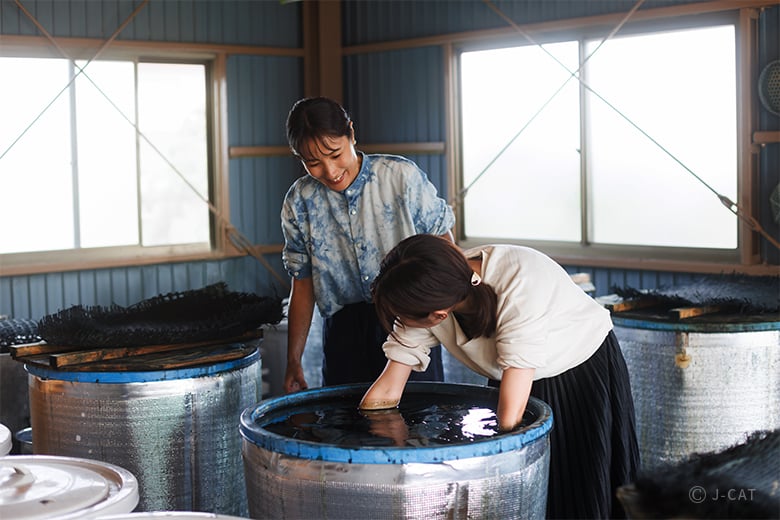
Air bubbles create a hostile environment for the microbes, so work with slow careful movements to avoid ripples, waves, and splashing
After slowly rubbing the dye into the cloth, let it soak under the surface for ten minutes. Repeat twice the process of tenchi-kaeshi (turning the cloth inside out), then gently and slowly remove it from the dye solution and rinse it off. The cloth – which looks black at first – will bleed off all excess pigments aside from the indigo blue, at which point it can be dried in the sun. Direct sunlight helps to further purify the dyed fabric.
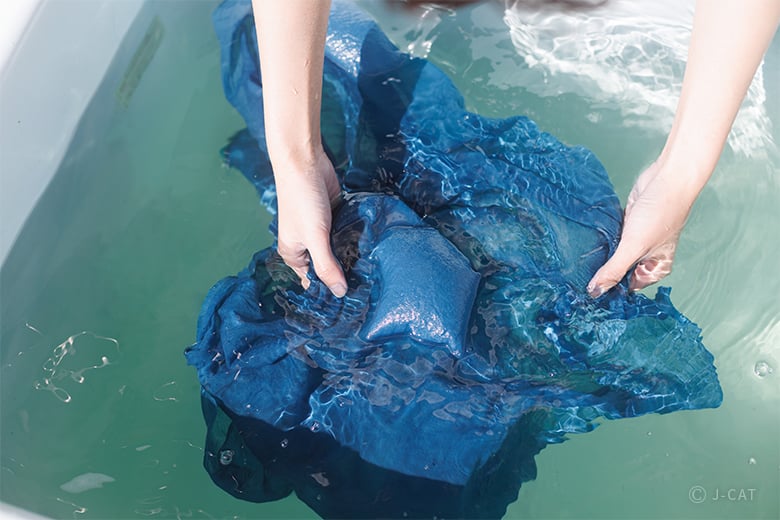
Rinse the cloth by churning it roughly in the water to maximize air exposure
Typically this dyeing and rinsing process is repeated six times or more. In this experience you will do it only twice before washing and sun-drying to create a clean, gorgeous, and durable hue.
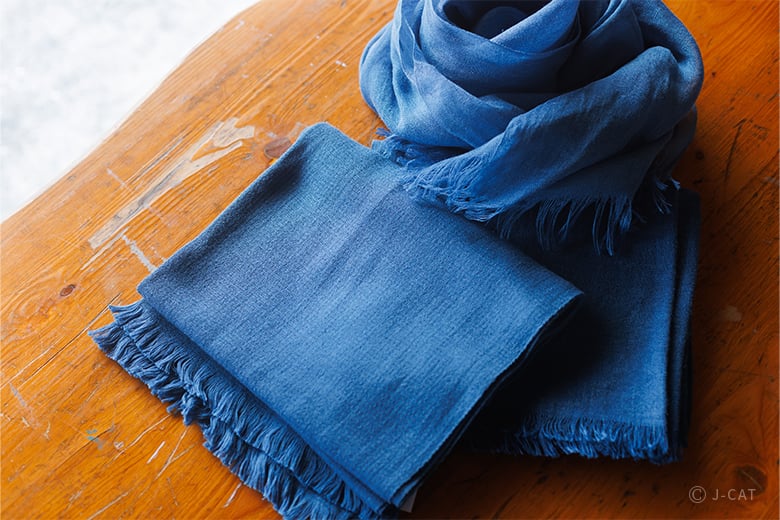
Your dried finished piece can be taken home with you on the day
Optional Dyeing Add-ons: Vests, Tops, and Blankets
This exclusive plan includes dyeing a large shawl that can be wrapped around the neck and shoulders, but guests can opt to upgrade to optional add-ons including vests, tops, and blankets featuring traditional Japanese patterning (additional fees apply).
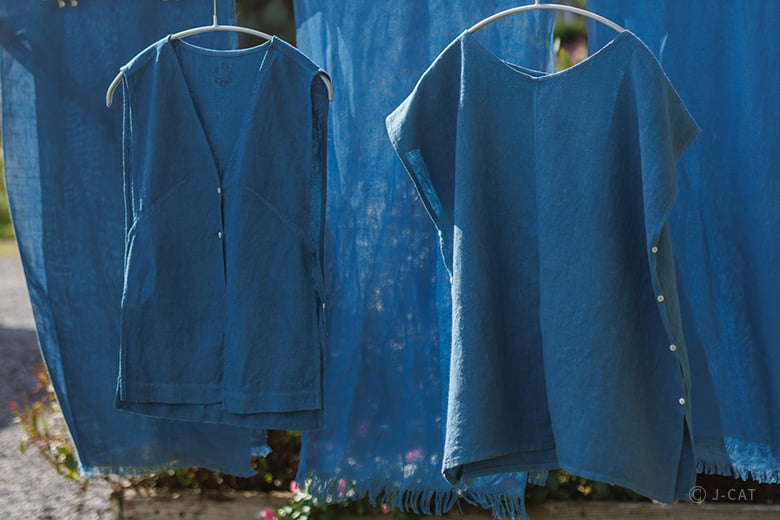
Large indigo-dyed shawl (background), vest (left foreground), and top (right foreground)
The vest and top are Kazuya’s own designs, drawing on the straight squared lines and single-piece fabric patterns of traditional Japanese clothing, embodying the traditional spirit of making the most of the cloth and reducing waste.
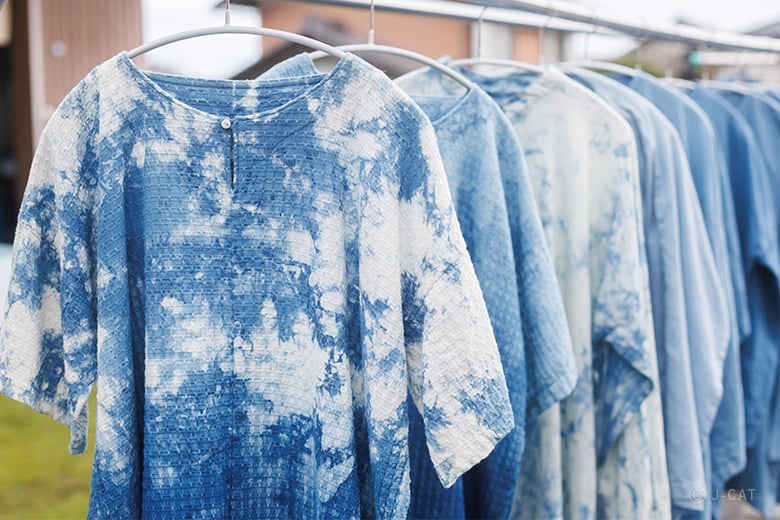
Each piece has its own unique hue and beauty
An Experience Unique to Aiwayu, Discovering Japan’s Distinctive Culture and Philosophy
“I don’t think of what we’re doing as dyeing the fabric ourselves,” explains the dyer. “Rather, I think of it as a collaborative process where we nurture the microorganisms and bring them the fabrics we want them to dye. Their role in the process is almost divine, and we venerate them appropriately, never forgetting our gratitude for what they do for us.”
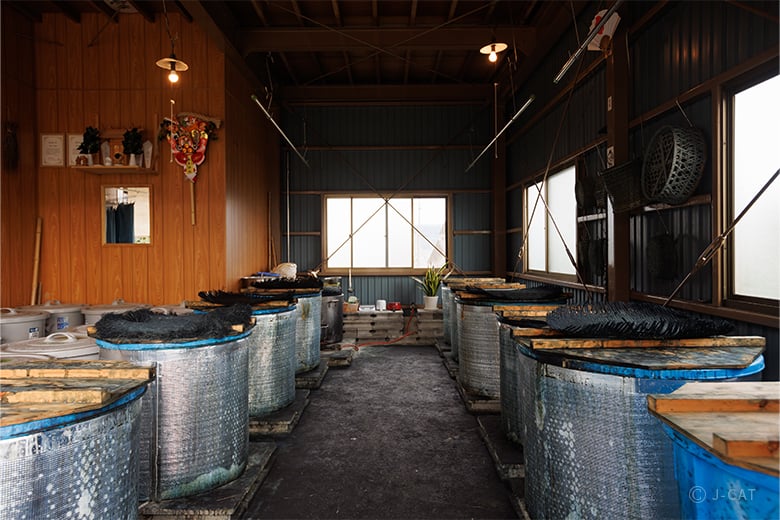
Ten different batches of dye solution in their vats, mixed at different dates – at Aiwayu, each mixture is given a name and treated like family
One of the most important factors in the dye solution environment is the pH level, so typically most fermentation dyers will use a pH meter to measure and control it. Aiwayu, however, does not. Instead, they commute with the dye solution intimately and learn to read its health from visual signals and smell.
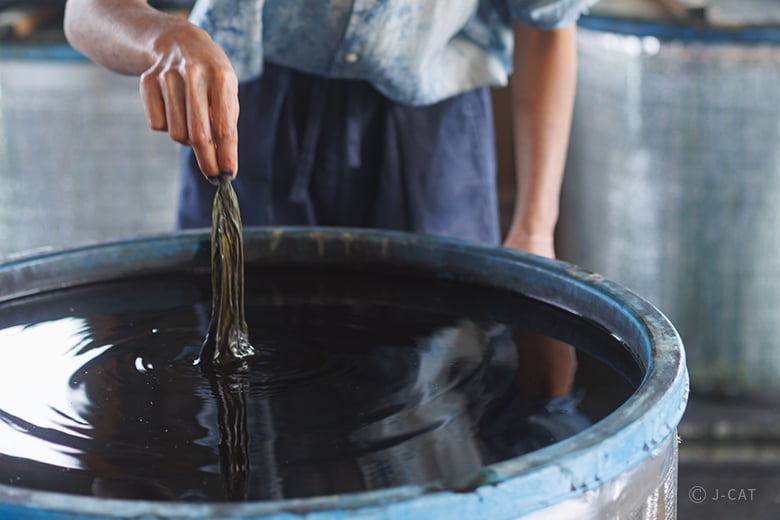
Checking the condition of the solution by test-dyeing a tissue
We live in a world of uncertainty, so I think things like prayer and self-honesty are important,” says Kazuya. “I hope that those who visit us can feel the spiritual philosophy that has reached us from ancient times through hondate sho aizome.” Stilling your heart and focusing on the process of dyeing cloth in this serene mountain setting is sure to build a profound connection between you and your creation, and a deeper appreciation for Japan’s culture – so why not pay Aiwayu a visit?
Aiwayu
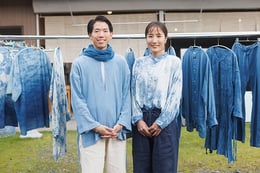
Aiwayu
Gifu-based fashion brand Aiwayu produces hondate sho aizome textiles and original clothing, run by husband and wife duo Kazuya and Miki Nohara. Kazuya designs and tends to the dye solution, while Miki is the dyer. Seeking the essence of clothing, Aiwayu creates garments to nestle the body in.
Customer's Voice
Everything about it was wonderful. The artist I visited was welcoming and the experience was well designed. Putting my hands in the dye vat: just having that hands-on experience was fantastic. I loved the chance to meet an artisan, see his studio, and also the countryside. I would say that it was an extremely rich experience, and helped make my trip feel very personal.
B.W. United States
Location
Aiwayu
Ibi Disctict, Gifu
Request for booking
Select first preferred date (JST)
December 2025
Sun
Mon
Tue
Wed
Thu
Fri
Sat

Instant Booking

Request Booking

17
Full

17
Unavailable
Gifu
180mins
from ¥43,000 /person
1 - 4 participants
Available in English
Cancel free up to 4 days prior
Things to know
Contact Us
If you have any questions, please contact us using the form below.
We also accept bookings from corporate clients and travel agencies.